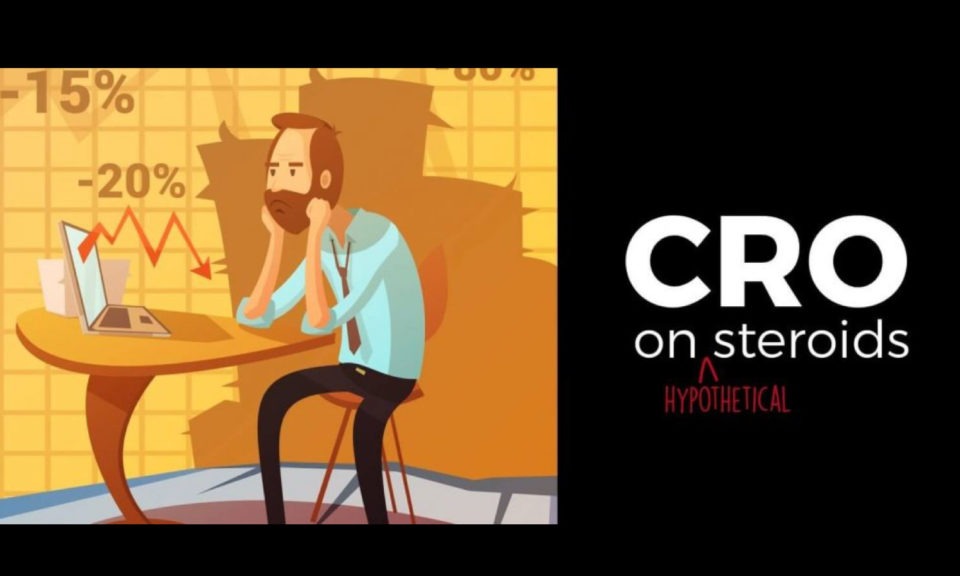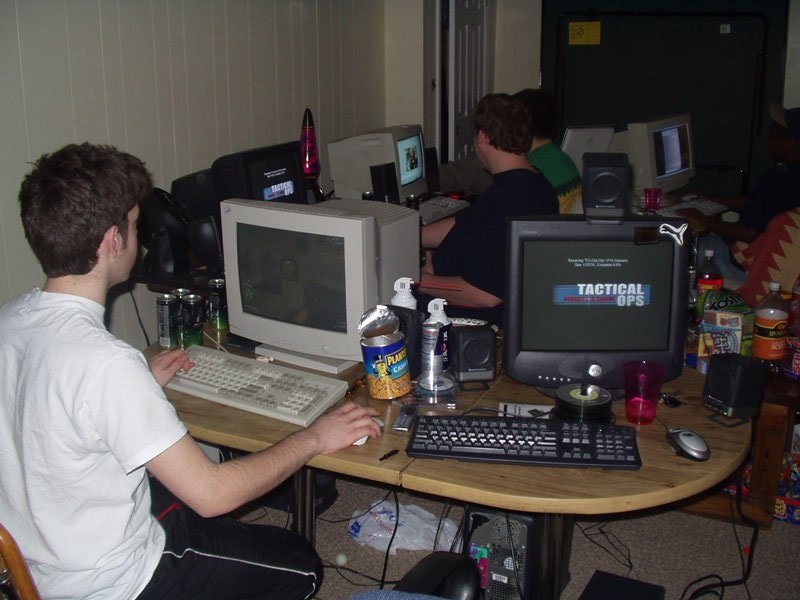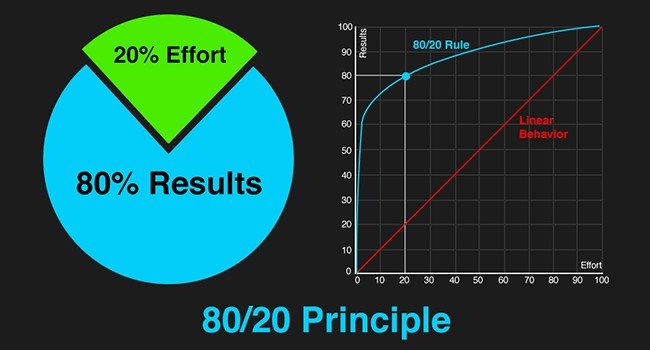
Attention SEO: How to Put Your Conversion Rate Optimization on Steroids
I was 15 years old: It was the year 2000.
We had just survived the Y2k bug.
There was a buzz in the air. The computer world wasn’t over.

For anyone born after 1990, you’ll remember, this was a strange time.
As a nerd, it was the only thing we worried about, and we survived it.
On a Friday afternoon, my friends and I would gather on the football field to discuss the plans for the weekend:
Me: So whose house this weekend?
Pimply faced friend: Mum said we ca do it at mine.

We would jump on our bicycles and get home as quick as possible to get ready. My record was 12 minutes.
This is where our weekends would differ from 90% of our school friends. Instead of discussing which parties we would be getting drunk at over the weekend we discussed LAN parties.
As soon as I got home on a Friday afternoon, I would rush to pack up my PC, load it in to the car, and head to pimply face friends house (this weekend anyway).
Our internet speeds at the time would max out at 5KB/s. Yes, KB, not MB.
Because of this, we would all (usually 6 of us) convince our parents to help us load up the car with our 14inch CRT monitors, huge PC cases and all the other wires and peripherals that make the damn things run.
School finished at 3PM, and by the time we’d finished setting up all our PCs and be ready to game it’d be 6PM .

A 2001 LAN party. This is how we used to play multiplayer StarCraft. Photocred
This is what we call a LAN party. In order to have data transfer and latency speeds quick enough to play a 6 person multiplayer game of Starcraft, this is how we would spend our weekends.
Dear Millennial, please be greatful of your 100mb/s you have on your phone. It was not always like this.
We would get so wasted. I remember I drank 6 full sugar cokes in 1 day…… I was off my head.
Laying the Foundation
Looking back at this time (now 32) I would have no idea how much an impact gaming would have on my future career in business.
I’m sure many of my peers would agree, gaming would lay the foundation for;
- Managing a team
- Communication
- Working towards a team goal
- Management of resources
- Strategy
At the time, my parents would get angry at me for not doing more wholesome events like surfing or playing rugby, which were two of the most popular activities in South Queensland, Australia.

Surfers Paradise, Australia, where I chose to be a nerd.
Little did they know, I was laying the foundation for some of the most important business skills I could learn.
All whilst cooped up inside, blinds drawn, smashing down a bag of Doritos.
But, there was also another very important skill set that was being developed during this gamer period too.
Always Finding Shortcuts.
I had a friend, Drew, who was one of those gamers that was a true master of his art.
I don’t think I ever beat him at one game in our teenage years. That was until I found hacks or cheat codes.
It was probably not the most ethical thing to do, but it got me to the end goal which I had in mind, which was winning.
Needless to say, I got all my online accounts banned very quickly from using hacks and cheats.
Moving from Gaming to Making Internet Moneys.
In the dawn of the new millennium the internet was the wild wild west.
There was literally no policing of anything on the internet, you could do what you wanted.
…. and people did.
I will never forget the first time I made my first magical internet moneys.
There was an opportunity for anyone to make money from home by just using their computer.

AllAdvantage.com would display advertising directly to your PC. Photocred
The company was called AllAdvantage.
Essentially, they would install software on your Windows machine and just display ads to you as you browsed.
Sort of like an old school facebook ads.
For a full day of using your computer, for 8hrs a day, you could make………… like 60 cents.
…. my outlook had changed at this point. I started to think, well, if I could somehow make it seem like I was on the computer for 24 hours a day, I could make like 1-2 dollars a day if I could somehow get the computer to click the ads and interact.
If I could do that on one machine, then what if I did it on 10 machines.
We also have to remember that I lived at home and didn’t pay power, so it was all profit.
I searched around on dodgy forums for a few hours and someone had already developed a hack.
Essentially, the script would mimic human interaction… for 24hrs a day, 7 days a week.
One month later, I get a cheque in the mail from the USA, all the way to Australia.
Total amount: $32.64c
via GIPHY
In Australian dollars at the time. That was like $50. Do you know how much candy you could buy for that?
Everyone I’ve ever met who works online remembers the day they made their first dollar online. It causes a paradigm shift, it causes you to look at the world differently.
It’s easy looking back now and seeing all of this.
But… As a teenager and young adult, I thought I had a problem.
In every area of my life, I would always find the quickest way to do something with the least amount of work.
I was always told I was lazy and that no one gets anywhere by taking shortcuts.
Making the transition into a man: Becoming an Entrepreneur.
As I started reading more and more books I started to see some patterns with successful entrepreneurs and I am very willing to share them with you through CRO consultation.
Shortcut 1: The main one was that they learned from the success to short cut their success by not making the same mistakes they had.

Shortcut 2: I kept seeing the Pareto principle brought up again and again.
The Pareto principle is a theory that says 20% of the inputs create 80% of the outputs.
When I read a book on the topic (no affiliate link) I realized, this was exactly what I should be doing.
Finding the few most crucial inputs that create most of the outputs.
Or said in another way: what 20% of the things I am doing are creating most of my success?

Applying it to CRO.
OK, Kurt, we get it, cool story, but how does this relate to conversion rate optimization?
For me, the 80/20 of CRO looks like this:
1. Find the top 5 pages on your affiliate site that create 80% of the revenue roughly. Remember, this is a theory and framework, it is never exact.
2. Add heatmaps to those pages to see where people are clicking and interacting on the page. See the guide here.
3. Run a split test on 20% of the areas that create 80% of the clicks. Here are some ideas.

You have identified the hot spots on your website using a Heatmap tool. What should you start split testing?
This is the #1 question that I get from people who are getting started with CRO.
4. Run segmented tests to the device level and report down to the device level.
I have talked about points 1-3 above in detail before, but adding in point 4 will put your CRO on steroids and has increased our chance of CRO training test success to nearly 100%.
In this post, I will work through step-by-step how to:
- Segment reporting down to device level
- How to roll out a winning variant to desktop or mobile ONLY depending on results
- How to set up a second test to the losing DEVICE only.
- Our lather, rinse, and repeat process to achieve consistent results
If you read this article all the way to the end, we will summarize it all in a quick step by step video. Make sure you read the article all the way through to really understand it all.
Whenever a new variation fails to produce net gains, or worse, decreases the conversion rate, it can be disheartening. It can make you want to quit. But what if I told you that every test has the possibility to produce at least some positive value? It’s sometimes as easy as showing your variation to the right users.
Actually, there’s a good chance that a CRO conversion rate optimization test you thought was a failure was actually a big success and you just didn’t realize it, because you didn’t know how to use the data:
Why losses are sometimes winning in CRO (if you know how…)
We’ve all been there before:
You’ve concocted an awesome hypothesis, implemented your game-changing adjustments, and proudly rolled out your new variation—now you sit back, relax, and wait for your variation to crush its obsolete older version.
But then the opposite happens….
By the time your test reaches statistical significance (more about statistical significance later) it is a complete and utter failure: -10% conversions!
What? How could this have happened?
The problem is probably not what you showed the users but WHO you showed it to.
But just because the test was an overall “failure” doesn’t mean it was a complete failure..If you looked deeper at the data, you might see something like this:
- Desktop visitors: -40%
- Mobile visitors: +30%
Overall conversions: -10%
Desktop users hated your variation, but whatever you did was a big hit with the mobile crowd. Your test was actually a major success! Any time you can increase your good conversion rate by 30% on any device, you’ve hit big.
Here’s the problem….
By default, if you use VWO or Optimizely split-testing software, the traffic is split 50/50 evenly between the variation and the original. Sounds pretty standard, right?
It doesn’t matter where they’re coming from or by which device, they are shown the same lander.
Your traffic arrives via:
- Desktop
- Tablet
- Mobile
And the way they interact with your site varies drastically depending on device.
- Desktop Users: Precision pointing device + large screen = clicking superpowers. These guys aren’t dealing with the same limitations as most mobile visitors.
- Tablet: Instead of a precision pointer, users are are clicking with their points fingers. It’s a tad bit clunkier and not as accurate.
- Mobile: Thumbs. Enough said. Great for gripping objects and swinging from branches. Bad for clicking buttons and filling in forms.
Key Takeaway: Users interact with your site differently based on device, so it makes sense that what works for one set of users won’t necessarily work for the other. You’ve got to optimize your site by device.
The purpose of this article is not to show you what to test. I have done that in detail here, I have also done that over here too. Lead Generation sites can see a huge write up we did for empire flippers here.
How to Increase your chance of running a successful split by segmenting
If you want to increase your chances of CRO success, you’ve got to test each group of users separately by device. Luckily, testing platforms have built-in segmentation options.
Once you separate users into their proper buckets (not literally), your test results become far more accurate and you equip yourself with more granular data to further refine your testing.
Real Quick: What is segmenting?
In case you literally have zero clue what we are talking about….
In the split testing world, segmenting is categorizing groups of visitors into different groups or “buckets” based on certain criteria. VWO is an awesome platform that lets you segment based on:
- Country
- City
- Type of Device
- Operating System
- Traffic Source (organic, ppc, social)
…. just to name a few.
The logic is that visitors of a certain subgroup are likely to purchase in similar ways. Segmentation allows you dice up the data at the end of the test based on your segments, drastically increasing your chances of success.
Why segmentation works: mobile vs desktop users
The layout and function of your site have to be optimized by device or else you are going to run into a slew of usability issues.
Like we mentioned before, desktop users have luxuries that mobile browsers don’t.
For example….
If you’ve got fat thumbs like myself, you’re going to have a hard time clicking a link. Any link for that matter, but especially one that’s toward the top of the screen. Desktop users with their fancy mouse and monitor won’t have that problem
Whereas a button will function much better for these users. On desktop it’s much different, the mouse pointer is a tiny, accurate and precise instrument.
Pro Tip: As a “rule of thumb”, buttons work much better on mobile than links.
On a mobile, a user’s thumb range is rather limited…see below;
 This has to be taken into consideration when designing your site.
This has to be taken into consideration when designing your site.
Getting started.
I will be running through this tutorial in VWO. Our preferred platform for split testing at Convertica. We recommend keeping it simple at the beginning, but once you’ve got this system down you can use it for more than segmenting devices. Once you’re a segmenting badass, feel free to go into more advanced strategies like geographic segmentation.
Speaking of geographic segmentation….
Pro Tip: Displaying geo-specific info like shipping icons and national flags on your product pages does really well. You can even track by IP and say FREE SHIPPING TO “CITY” to really increase conversions. It is always best to test this to begin with so you can see by HOW MUCH better the new variation works.
Remember: Doesn’t matter if you’re using VWO, Optimizely or Google Optimize, the strategies are rather similar. The platforms just vary slightly. You only need to follow conversion rate optimization steps to get positive results..
Let’s get straight into it. I will be setting up this tutorial as a VWO Split URL tests to keep things basic to show the example. These strategies can also be used for AB and Multivariate tests too.
In a nutshell….
Running a successful CRO campaign for your website is about finding the 80/20 that cause the biggest increases. It’s not about aiming for perfection.
By adding in segmented split tests will allow you to increase your chances of success to nearly 100%.
This will allow you to build momentum and significantly increase your revenue over time.








 To get started, please enter your details below
To get started, please enter your details below
OH nice one, i haven’t done much CRO so i like the top 5 page idea and using a heat-map to figure out where people were clicking i kid of knew about that but i have never implemented it on my own affiliate so so i might actually try that out now you have pushed the button cheers
Hey Kurt, I am curious to know if you only (or mainly) focus on positioning of certain elements on the page or do you do split test copy as well? Cant put my finger on it, if thats a CRO issue or not 😀
In regards to CRO on amazon aff sites which I presume you have seen your fair share, do you have any tips/resources as to how many CTA buttons to use or whats the best (words of content vs. cta text/buttons etc.) ratio? Have yet to find a decent guide on that, which I find a bit strange tbh 🙂
Thx for any info you can spare 😉
Sincerely, Igor B.
Due to us working with primarily SEO clients, we don’t like to play around with SEO content too much at all. We don’t want to affect the site on an SEO level at all. In terms of CTA buttons, there is no magical amount but we don’t like to use over 5 per page, you have to be careful with OBL count too. We nest the links as one where we can. We find, if you have 5 items in your comparison table, then you would have 5 mini review areas. That would be all you would need for CTAs on a page. We see people reviewing 20+ products on a single page. We think this is total overkill as the mind can’t compare that many items at once.
Great post Kurt.
Let’s say you’ve done the testing and you find that the best layout for desktop is different than the best layout for mobile.
After the test is complete, how are you able to keep showing the different versions of your page to desktop and mobile visitors?
You can show and hide elements with CSS. Here is an article on the topic: https://www.webdesignersacademy.com/show-and-hide-different-content-on-mobile-devices-desktops/
If you want to output different HTML to desktop and mobile, this plugin is really good for that: https://wordpress.org/plugins/mobile-only-desktop-only-content/